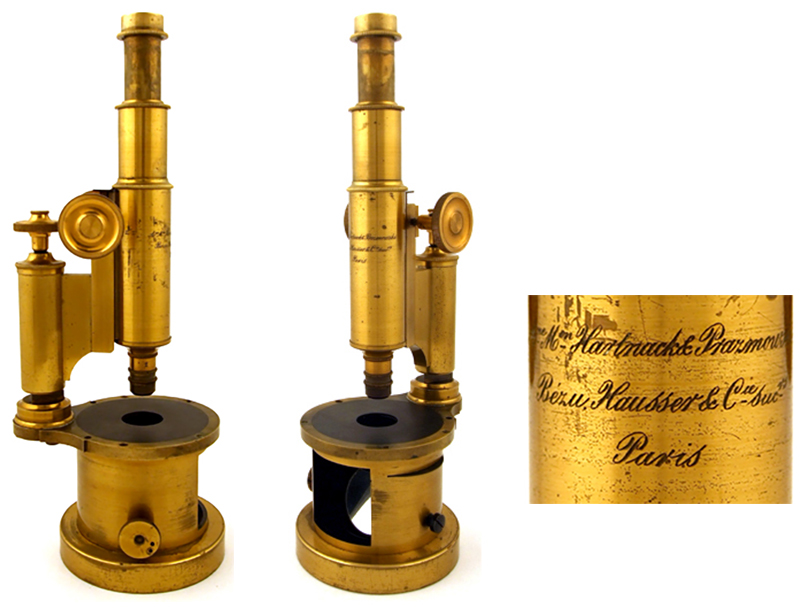
Figure 1. A drum-style compound microscope. Adapted for nonprofit, educational purposes from https://www.musoptin.com/item/pankratisches-dissektionsmikroskop-ane-mon-hartnack-prazmowski-bezu-hausser-cie-sucrs-um-1885
Bézu, Hausser, and Company, 1883 - 1896
by Brian Stevenson
last updated September, 2019
Almost nothing is known about the owners of this Parisian optical business, not even their first names. It is certain that they previously worked as foremen for Edmund Hartnack (1826-1891) and Adam Prażmowski (1821-1885). Hartnack and Prażmowski had been business partners until 1878 (although Hartnack, a German, had left Paris at the outbreak of the Franco-Prussian War in 1870). Bézu, Hausser & Co. took over from Prażmowski. For the most part, they produced microscopes that were very similar to those of their predecessors. Henri van Heurck wrote in 1891 “Ces constructeurs ont un nombre considérable de modèles” (these manufacturers have a considerable number of models).
In 1885, van Heurck wrote that Bézu and Hausser had worked for Hartnack and Prażmowski for “depuis plus de trente ans” (more than 30 years). This suggests that they may also have worked for Georg Oberhauser (1798-1868), who turned over his business to Hartnack in 1859.
In that same publication, van Heurck also wrote, “Ces Messieurs sont les successeurs de la maison Prażmowski, qui, elle-même, comme on sait, continuait à Paris l'ancienne maison Hartnack et Prażmowski” (These gentlemen are the successors of the house Prażmowski, which, as is well known, continued in Paris the old house Hartnack and Prażmowski), and “MM. Bézu, Hausser et Cie ont repris cette célèbre maison en 1883, il a n'y pas deux ans” (MM. Bézu, Hausser and Co. took over this famous house in 1883, not two years ago).
However, Parisian business directories continued to call the business “Prażmowski” until after that man’s death in 1885. Prażmowski was reported to have been very ill in 1883, so he may have sold the business to his foremen but remained active to some extent until his death. It is also probable that Bézu and Hausser wanted to keep their famous colleague’s name associated with the business for as long as possible.
Records have yet to be located that state the business owners’ first names. However, a couple of men have been found in French records that might have been our Bézu and Hausser:
The 1891 voter record of Louis Bézu states his profession as “mechanicien”, a term that has also been applied to Prażmowski. This man was born on October 8, 1835, in Paris. In 1891, he lived at 22 Rue Debelleyme. Parisian business directories did not list him as having a business at that address, indicating that he worked elsewhere.
The case for identifying Hausser is a bit stronger. Frédéric Guillaume Haeusser, an “opticien”, became a naturalized French citizen in 1883. This was the same year that Bézu and Hausser acquired Prażmowski’s business. This man was born on December 29, 1827, in Friedrichstadt, Saxe, Germany (his original given names were probably Friedrich Wilhelm).
The business of Bézu, Hausser, and Co. ended in 1896, when it was sold to Alfred Nachet (1831-1908).

Figure 1.
A drum-style compound microscope. Adapted for nonprofit, educational purposes from https://www.musoptin.com/item/pankratisches-dissektionsmikroskop-ane-mon-hartnack-prazmowski-bezu-hausser-cie-sucrs-um-1885

Figure 2.
"Microscope spécial pour l’étude des bactéries" (bacteriology microscope). Adapted for nonprofit, educational purposes from http://collections.si.edu/search/detail/edanmdm:nmah_1349358
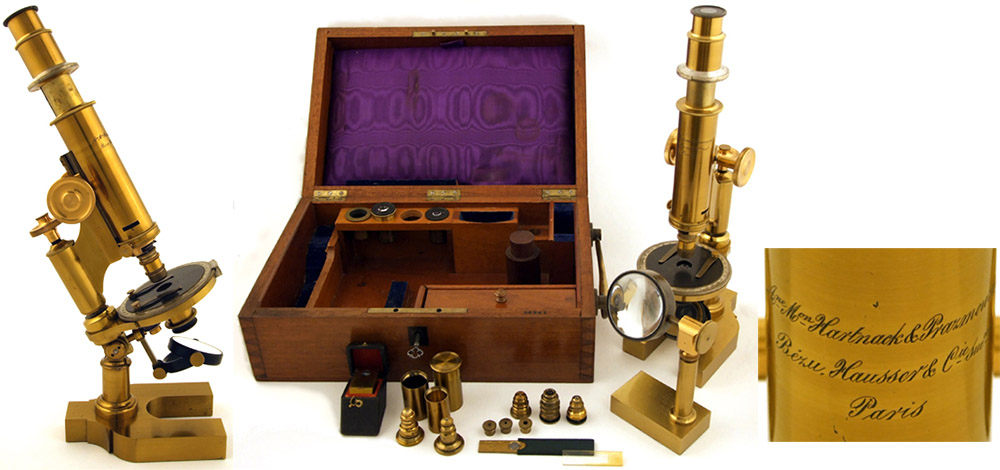
Figure 3.
Microscope with serial number 23205. Bézu, Hausser & Co. evidently continued the serial numbering system of their predecessors Oberhaeuser, Hartnack, and Prażmowski. Adapted for nonprofit, educational purposes from http://www.museum-optischer-instrumente.de/bezu_hausser_23205.html.

Figure 4.
Bézu, Hausser & Co. Stand III. The Stand III and Stand VIII were nearly identical, with the major difference being the substage: the Stand III has a revolving wheel of circular stops, while the Stand VIII has a more complex condenser (See Figure 17, below).

Figure 5.
Bézu, Hausser & Co. Stand III-A. It differed from the Stand III by having a hinge, which permits inclination of the instrument. Adapted for nonprofit, educational purposes from an internet auction site.
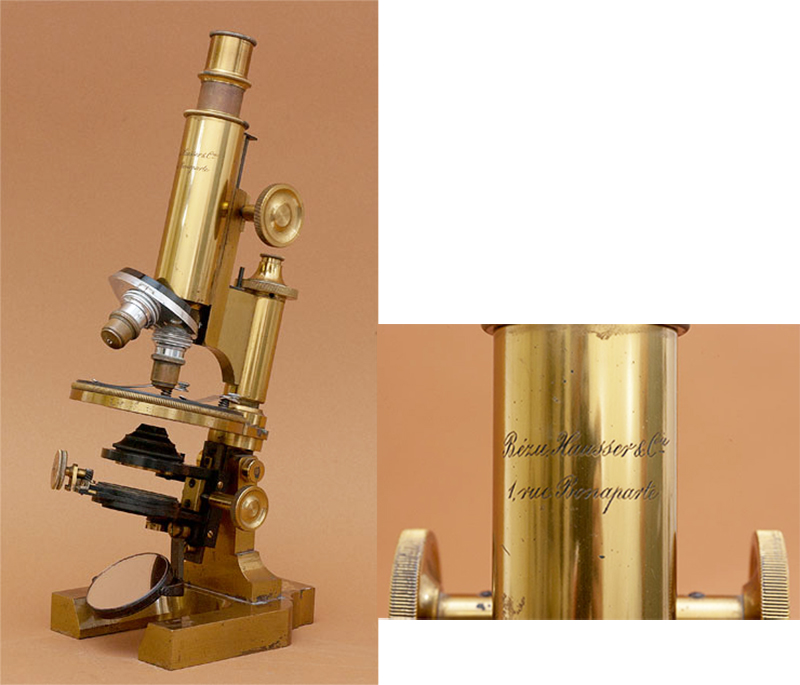
Figure 6.
Probably a late model "Microscope spécial pour l’étude des bactéries" (bacteriology microscope), noting that the manufacturers did not mention Hartnack and Prażmowski. Adapted for nonprofit, educational purposes from http://golubcollection.berkeley.edu/19th/316.html

Figure 7.
Bézu, Hausser & Co. micrometer, which accompanied microscope 23205 (Figure 3, above). Adapted for nonprofit, educational purposes from http://www.museum-optischer-instrumente.de/bezu_hausser_23205.html
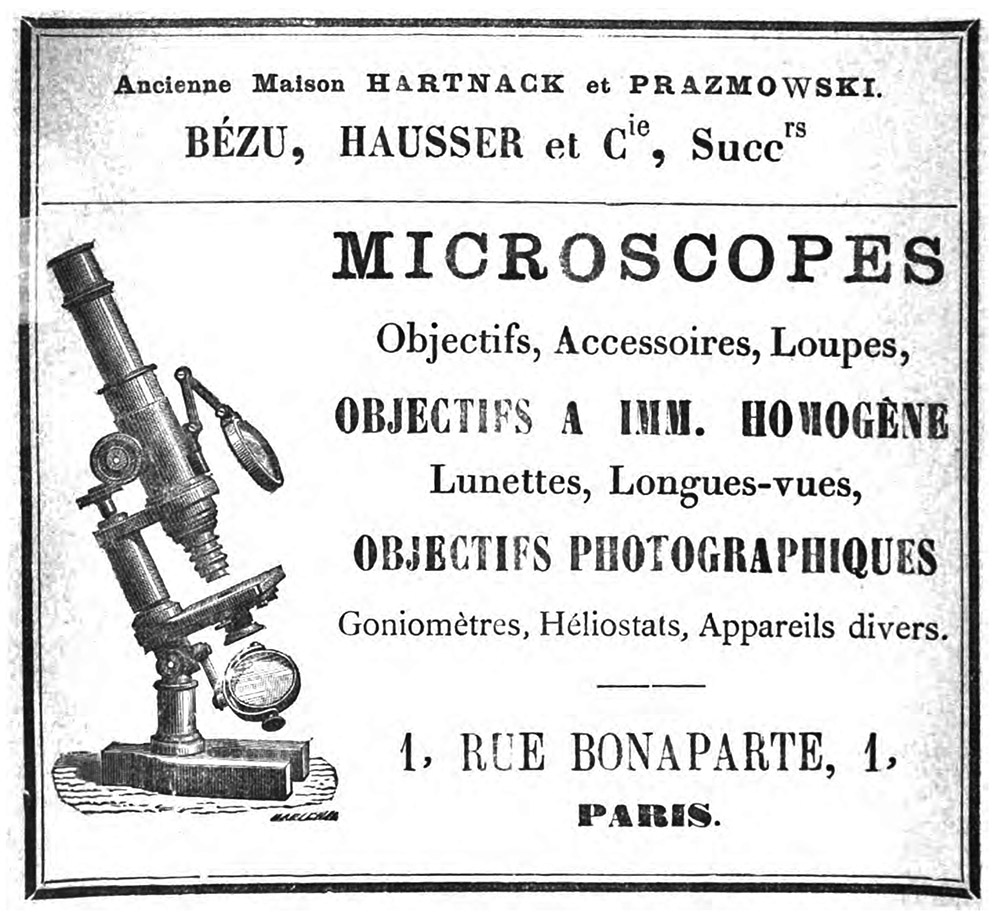
Figure 8.
An 1885 advertisement, from “Journal de Micrographie”.
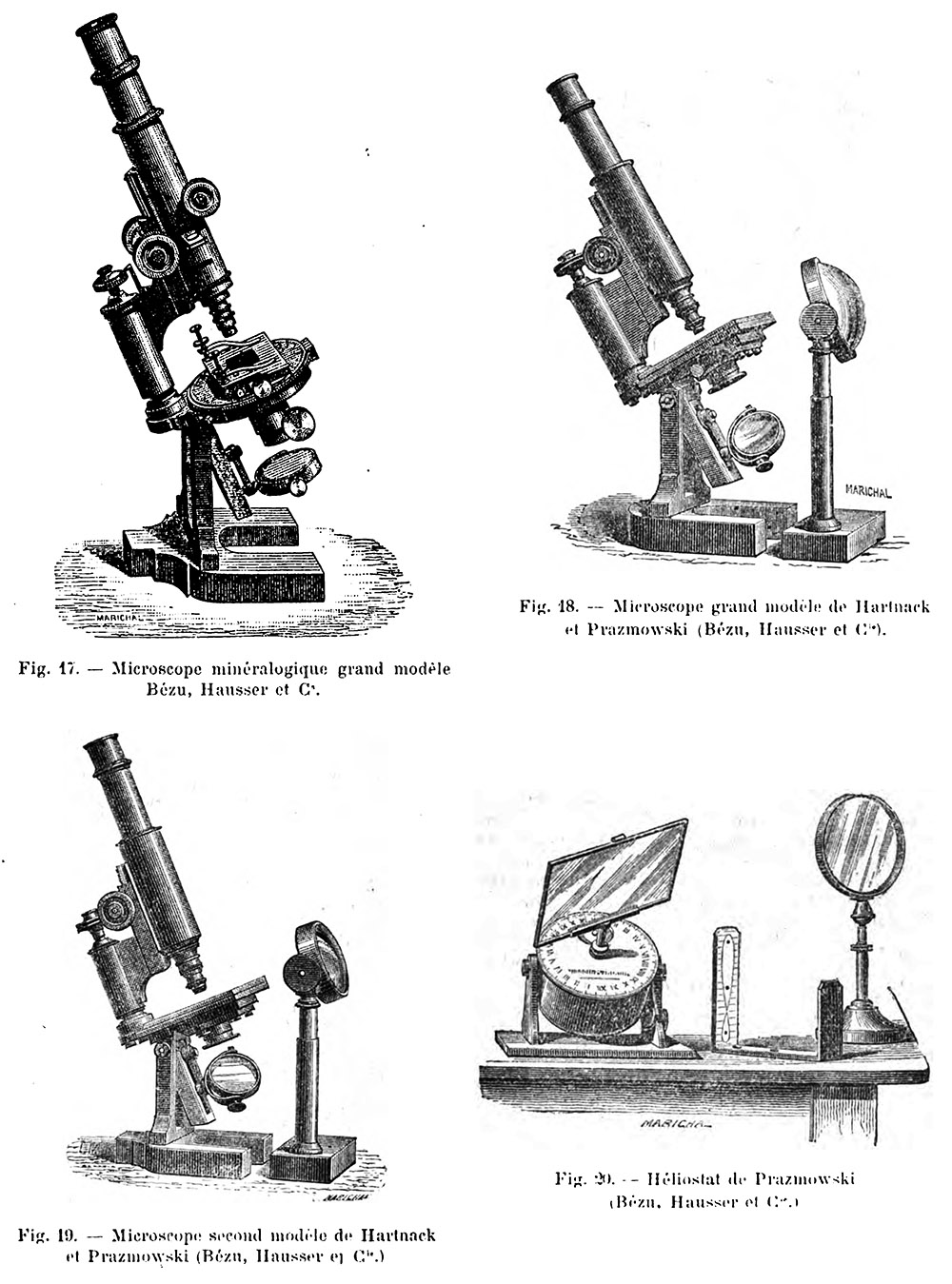
Figure 9.
Illustrations of microscopes and a heliostat that were offered by Bézu, Hausser & Co. in 1885. The upper left microscope is a mineralogical model that was designed by the noted geologist Marcel Bertrand. From an article by Henri van Heurck that was published in “Journal de Micrographie”.
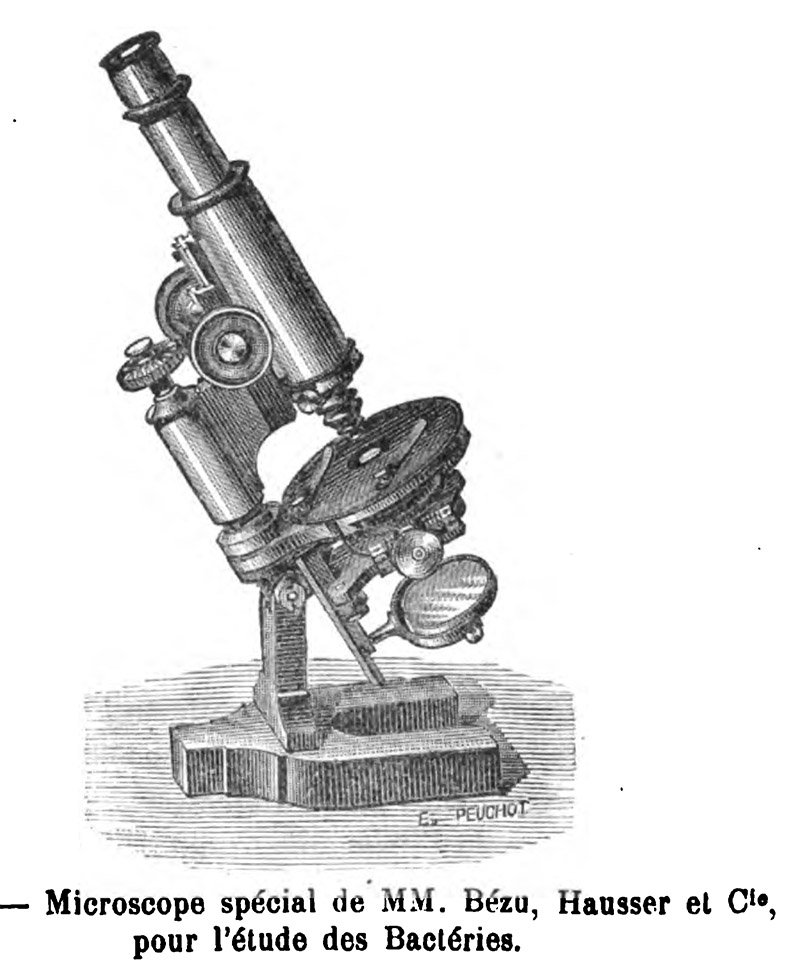
Figure 10.
An 1886 illustration of a Bézu, Hausser & Co. microscope that was designed specifically for bacteriological studies. From an article by Jules Pelletan that was published in “Journal de Micrographie”.

Figure 11.
An 1887 advertisement from “Journal de Botanique”.

Figure 12.
1889 illustration of Bézu and Hausser’s microphotography setup, from “Journal de Micrographique”.

Figure 13.
1889 advertisement, from “La Nature”.

Figure 14.
Two microscope models of 1891: “The Grand Model Hartnack” (left) and “Model VIII A” (right). The VIII-A is also illustrated in the 1885 advertisement reproduced above as Figure 1. Images from Henri van Heurck’s “Le Microscope”.
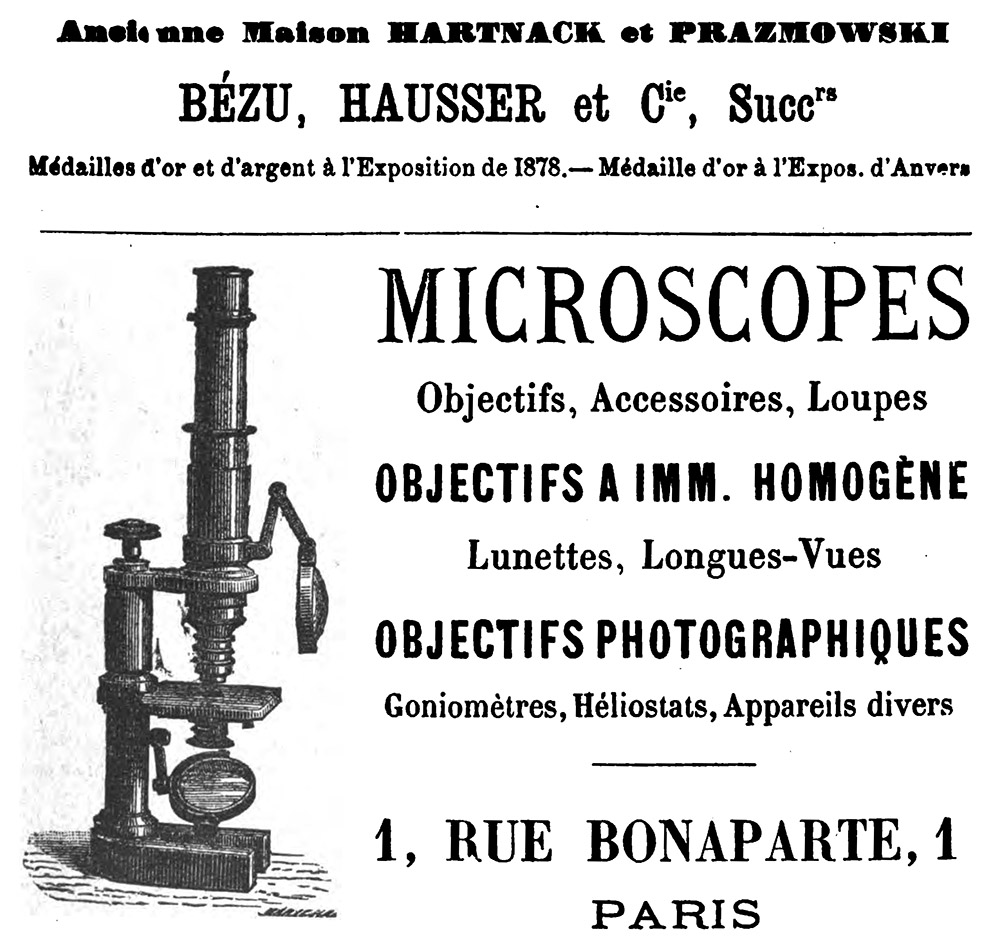
Figure 15.
1892 advertisement from “Journal de Micrographie”. The illustrated microscope appears to be their stand VIII, as shown in Figure 17.
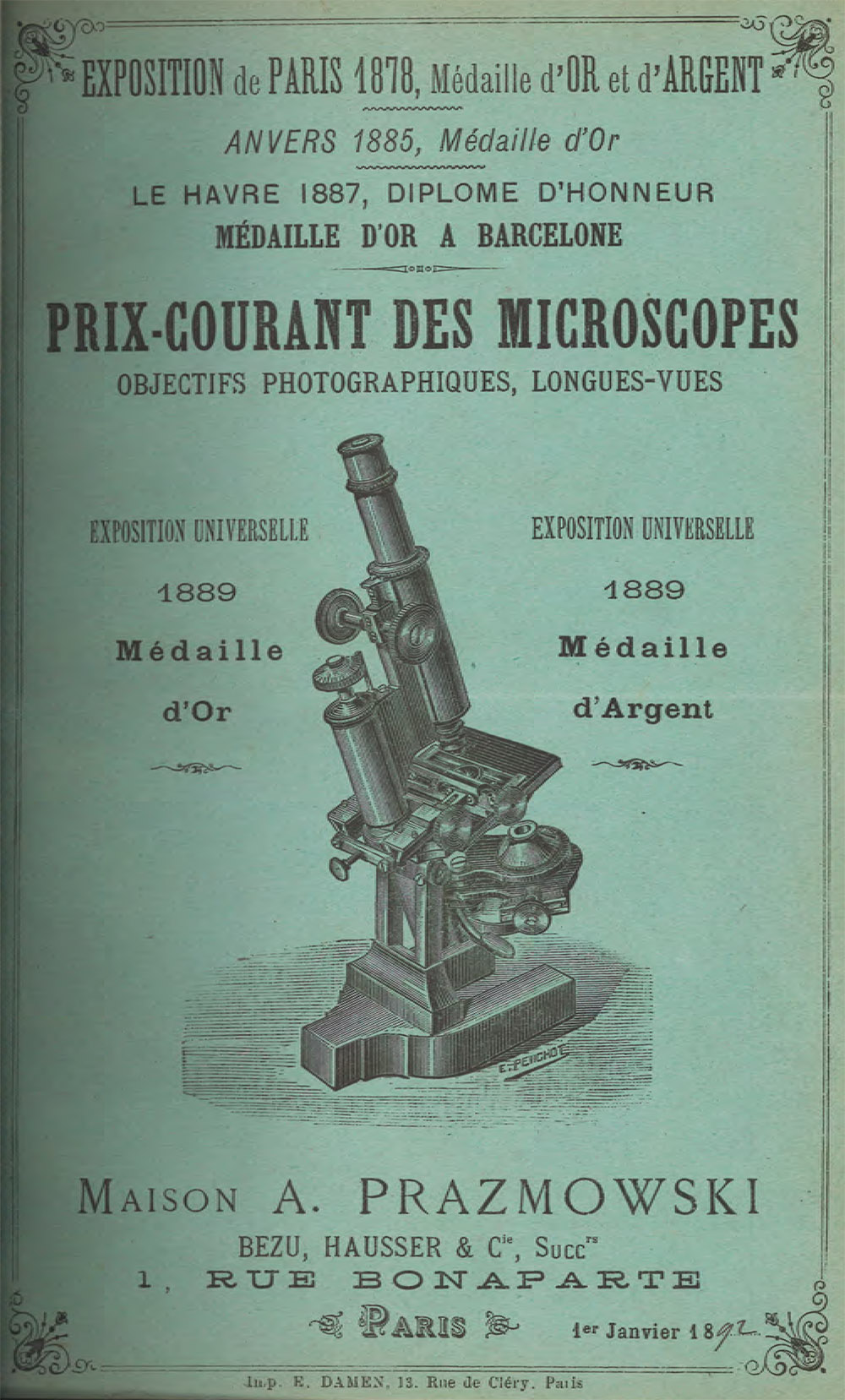
Figure 16.
Cover of the 1892 catalogue from Bézu, Hausser & Co. Courtesy of Alexandre Piffault.
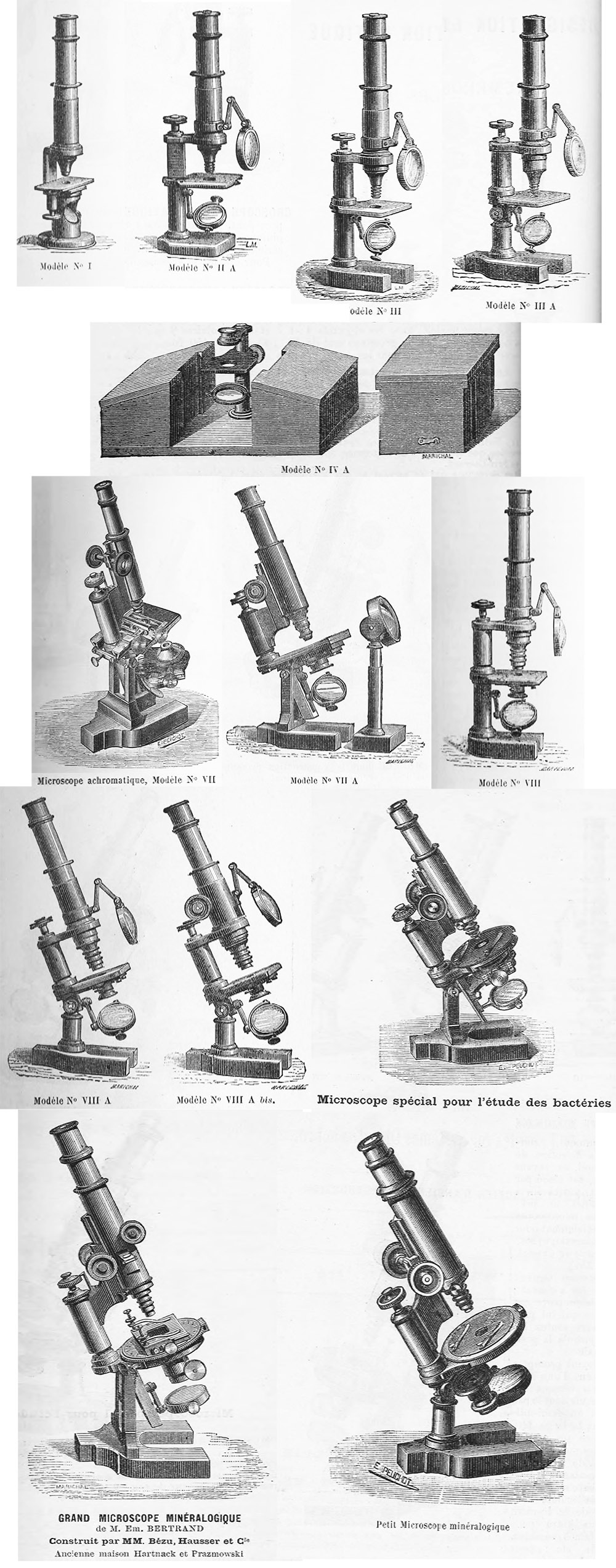
Figure 17.
Microscopes that were listed in Bézu, Hausser & Co.’s 1892 catalogue. Courtesy of Alexandre Piffault.
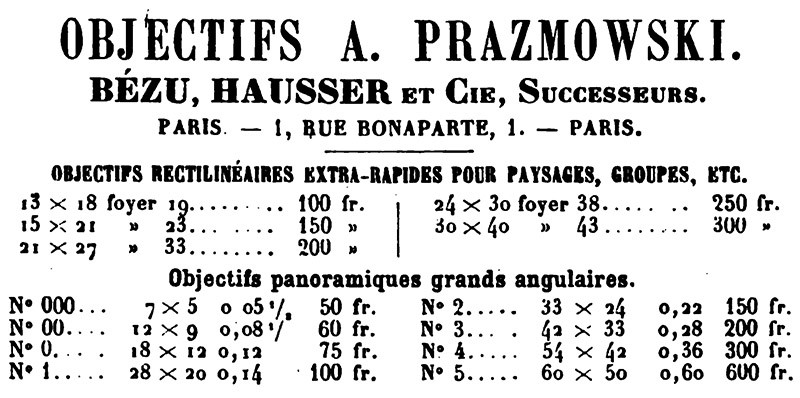
Figure 18.
Bézu, Hausser & Co. also manufactured camera lenses. This is an 1895 advertisement from “Bulletin de la Société Française de Photographie”.
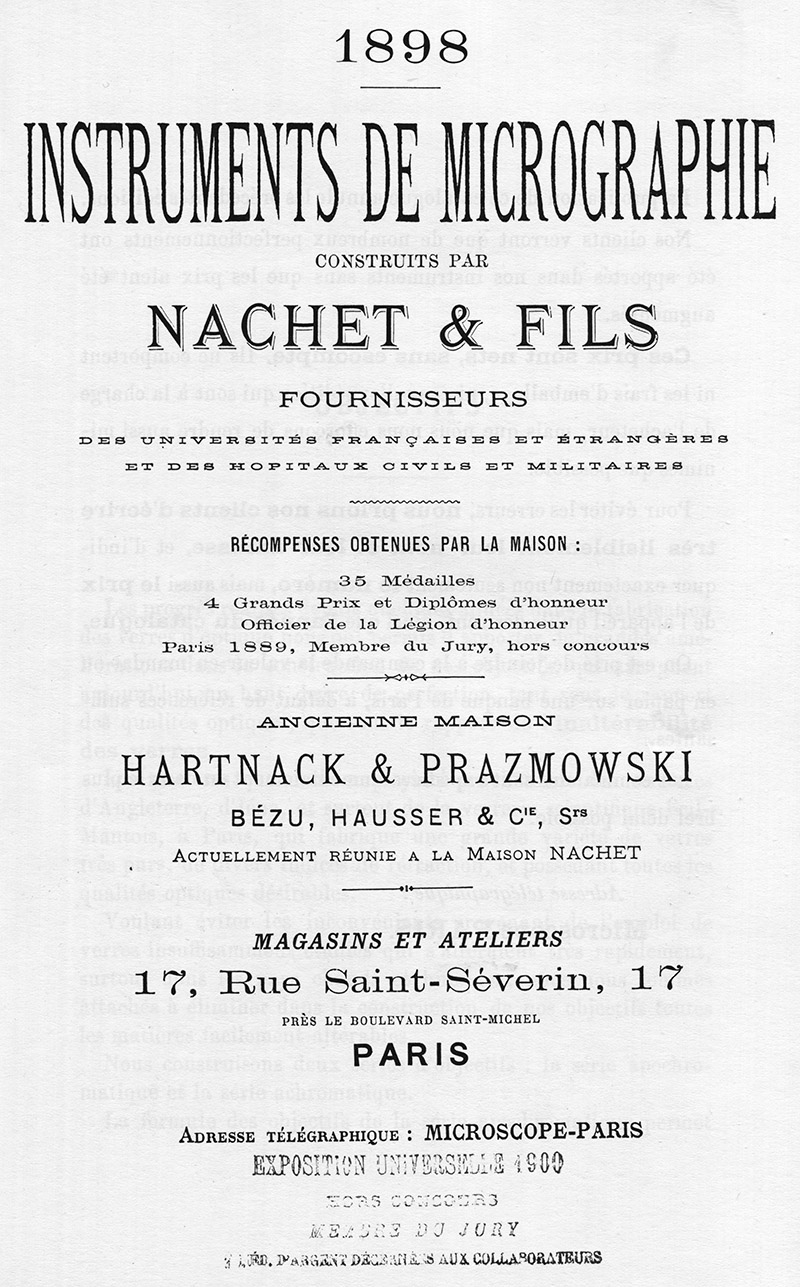
Figure 19.
Cover of the 1898 catalogue of Nachet & Fils, proudly announcing that they had acquired the House of Hartnack and Prażmowski / Bézu, Hausser & Co.
Acknowledgments
Thank you to Alexandre Piffault for generously sharing images and information.
Resources
Annuaire-Almanach du Commerce, de l'Industrie, de la Magistrature et de l'Administration (1880-1900), accessed through https://rapportgallica.bnf.fr
Brieux, Alain (1979) Maison Nachet Catalogues of Stock from 1854 to 1910, Brieux, Paris
Bulletin de la Société Française de Photographie (1895) Advertisements from Bézu, Hausser & Co.
Bulletin de la Société Linnéenne de Normandie (1899) “Nachet, rue St-Sévérin, 17 - Microscopes. Ancienne maison très connue, M. Nachet a réuni la maison Bézu à la sienne en 1896” (Nachet, rue St-Sévérin, 17 - Microscopes. An old, well-known house, Mr. Nachet united the house of Bézu to his own in 1896), page 114
van Heurck, Henri (1885) Bézu, Hausser et Cie., Journal de Micrographie, Vol. 9, pages 371-375
van Heurck, Henri (1891) Le Microscope, Fourth edition, pages 142-143
van Heurck, Henri (1893) Le Microscope, English edition, Crosby, Lockwood, and Son, London, pages 155-157
Journal de Micrographie (1885) Advertisements from Bézu, Hausser & Co., Vol. 9
Journal de Micrographie (1892) Advertisements from Bézu, Hausser & Co., Vol. 16
Journal de Botanique (1887) Advertisements from Bézu, Hausser & Co.
“L.P. de C.” (1885) Le microscope grand modèle de Hartnack et Prazmowski (Bézu, Hausser et Cie., successors), Journal de Micrographie, Vol. 9, pages 262-263
Naturalization record of Frédéric Guillaume Haeusser (1883) accessed through https://www.siv.archives-nationales.culture.gouv.fr
Le Nature (1889) Advertisements from Bézu, Hausser & Co.
Pelletan, Jules (1885) Les objectifs a immersion homogéne de MM. Bézu, Hausser et Cie., Journal de Micrographie, Vol. 9, pages 313-316
Pelletan, Jules (1885) Microscope minéralogique de M. Em. Bertrand, Le Nature, Vol. 9, pages 182-183
Pelletan, Jules (1886) Microscope spécial de MM. Bézu, Hausser et Cie. pour l’etude des bactéries, Journal de Micrographie, Vol. 10, pages 412-415
Pelletan, Jules (1889) La micrographie a l’Exposition Universelle de 1889, Journal de Micrographie, Vol. 13, pages 189-191
Pelletan, Jules (1889) Appareil micro-photographique de MM. Bézu, Hausser et Cie., Journal de Micrographie, Vol. 13, pages 430-436